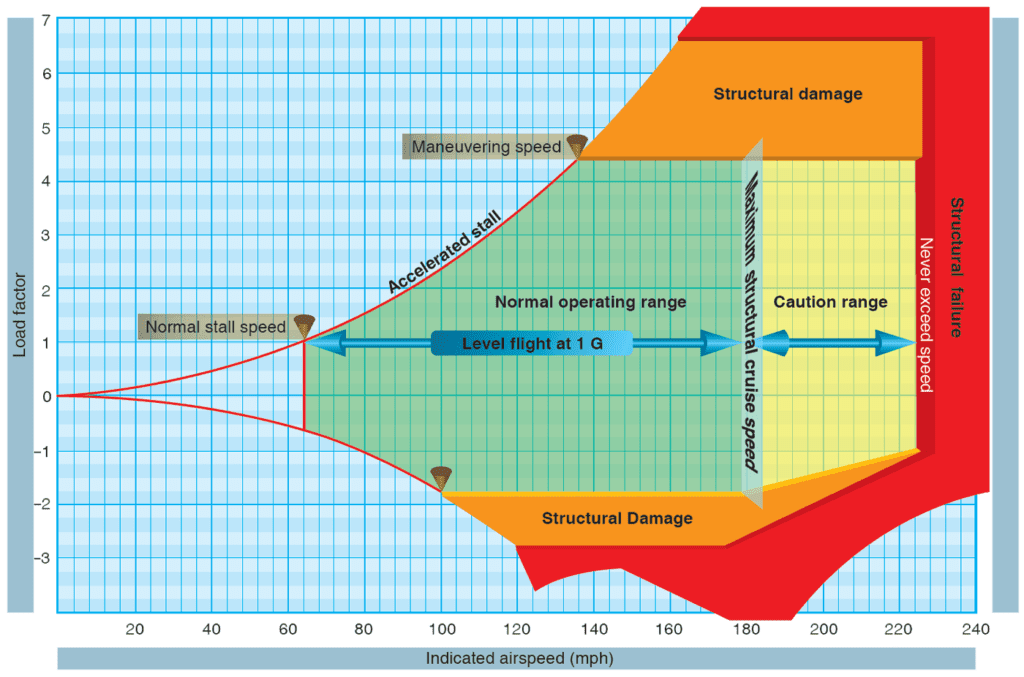
The airspeed range between Vno and Vne isn’t a noman’s land, but conditions have to be good to go there. Getting back from there might be a challenge, too.
One instrument almost all aircraft have is an airspeed indicator. Of course, it’s important to know how fast we’re going, if for no other reason than bragging rights, and that’s true for airplanes, rotorcraft, gliders and even dirigibles (hot air balloons need not apply). Piston-powered personal airplanes, meanwhile, often have a bunch of color-coded markings on their airspeed indicator (ASI), denoting things like best single-engine rate of climb (VYSE) or minimum-control airspeed (VMC), when considering twins, and flap operating range (VFO) and normal operating range (VNO) for everything else, including the twins. There also are white, green and yellow arcs, plus another red line at the high end of the ASI when flying a twin. Single-engine airplanes just have the single red line at the top end, the never-exceed speed (VNE).
The normal maximum structural cruising speed which should only be exceeded in exceptional circumstances and in smooth air.
A pilot may elect to fly at Vno in a rapid descent, or if for some reason (for example an onboard medical emergency) he wishes to reach his destination or alternate as soon as possible. In such cases, fuel burn per nautical mile is greater than when flying at the normal “high speed cruise” speed.
Flying at Vno can be hazardous if unexpected turbulence is encountered.
Manufacturers publish Vno to provide a safe buffer zone between normal airspeeds, and airspeeds that could cause a structural failure during high speed flight. During slow speeds, moderate turbulence will result in relatively small G-loading. As speed increases, the G forces associated with turbulence have a much stronger effect on aircraft load limitations. This is one reason you’ll start to feel uneasy sooner, as you fly into turbulence at faster airspeeds. Your body is experiencing more G-loading, just like your airplane.
As long as you’re cautious, you won’t damage the aircraft. That said, repeated flights in the yellow arc in anything but smooth air will impose repeated stress on your airframe. Over time, this stress could lead to structural failure. Simply put, if the air isn’t smooth, slow down below Vno.





